|
AF micro-adjustment for Canon EOS DSLRs © 2010 Arash Hazeghi |
|
III. Performing MA using remote AF 1) Connect the camera to your computer via the USB port, cancel any image download/pop-up application. |
|
I. Introduction
Thanks to scaling trends for CMOS image sensors most of today's DSLRs feature sensors with more than 12 million pixels, in order to take advantage of all of these pixels, it is essential that the projected image on the sensor be perfectly in focus. Due to various tolerances in manufacturing and calibration at the factory, offset focus error may be present in camera’s AF sensor, AF lenses or both. The degree by which this offset error will affect the perceived sharpness of a photograph will depend on factors such as aperture and subject distance. In order to compensate for this offset error most manufacturers provide a firmware feature called ‘AF fine-tuning" or "AF micro-adjustment". Here I explain an easy method to perform this correction in a more repeatable and consistent way. This method is primarily targeted for Canon and Nikon DSLRs which provide remote live view and remote focus actuation using manufacturer provided software. Other camera models can be calibrated similarly if firmware has identical capabilities. |
|
II. Understanding Micro-adjustment
Before starting to perform AF micro-adjustment, it is important to understand what it can and what it can't do. MA can compensate for a fixed and consistent shift in the focus system. Even when perfectly calibrated, the AF system in current EOS cameras is not always reliable, depending on the conditions, AF might miss its target and lock at a random distance, especially when tracking a moving subject in AI-servo mode. MA will not help in these cases because the error is not due to a simple offset in the focus mechanism. Before performing any calibration you must confirm that there is a focus offset error in your camera/lens. Performing MA randomly in the hope of getting sharper images will just result in further confusion and frustration. For this purpose we are going to use a standard AF target and EOS viewer utility software that is included with all Canon DSLRs. In order to use this method you need:
· Latest version of Canon EOS Utility software, you can download this from Canon website. · A Windows or Mac machine with a dual-core or better CPU capable of pulling live view from a DSLR in real time. · Sturdy tripod placed on solid ground. · A Focus target (anything with high contrast lines/patterns). This is a good example, you can also use a bank note. · A small mirror.
|
|
4) Click on Remote Live View Shooting this will open a new window with live sensor video feed: |

|
And after 2nd iteration the difference is already very subtle, the 5DMKII is resolving very fine dither texture on the map! This is with 24-105L @ 105mm f/4 . |

|
5) Make sure AF is in phase detect mode (quick mode AF) that uses camera’s main AF sensor: |

|
6) Choose the center AF point and make sure the white rectangle is centered on the AF point, this illustration is for 5DMKII, AF points pattern will be different for different cameras. |

|
8) Click AFON button, the camera will now perform AF. |

|
10) Now click on the ( > ) or( < ) buttons to shift focus back or front one click at a time until image appears sharpest on the screen, notice the contrast edges, you want them as crisp as possible. Write down how many clicks you have moved relative to the center, infinity symbol indicates far direction: |

|
11) Repeat this a few times until results are consistent. |






|
Press the shutter icon to snap a test image. If you have Canon DPP software it will automatically open in DPP once the file has been transferred. It is best to shoot in RAW mode. |
|
This is the result after one iteration of MA using the method above, notice how the fine dither is becoming visible. |
|
IV. FAQ
Q. What Canon bodies and lenses are compatible with remote AF described above?
A. It depends on the particular optical design of the lens, some older lenses where designed so that 1/3 of DOF was in the front of the focus plane and 2/3 was on the back, however this is not a general rule and many lenses are not designed by this rule. It is somewhat difficult to measure the DOF accurately, a simple method is use of a 45° target but this method is not very reliable as a slight drift from the 45° angle with respect to image sensor will change the DOF distribution. As long as you can get sharp consistent focus, DOF distribution should not be detrimental to the final output.
Q. The optimum MA value for my lens/camera is too large or exceeds the MA range, should I send the camera for calibration?
A. Yes, in this case only Canon can adjust the camera/lens.
Q. Do Canon use similar MA procedure for calibrating lenses/bodies at their factory/service center?
Q. Do MA values change with time?
A. It is possible due to thermal drift in the AF sensor, if you use your gear professionally check at least once every season. |
|
© 2010 Arash Hazeghi, all rights reserved for illustration only. |
|
Zoom window |
|
Active AF sensor |





